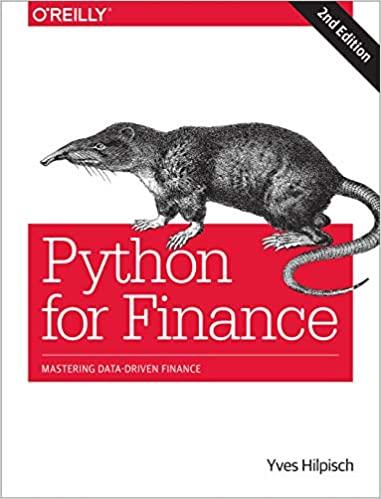Question
Period Port A Port B Fac 1 Fac 2 Fac 3 1 1.08 0.00 0.01 -1.01 -1.67 2 7.58 6.62 6.89 0.29 -1.23 3 5.03
| Period | Port A | Port B | Fac 1 | Fac 2 | Fac 3 |
| 1 | 1.08 | 0.00 | 0.01 | -1.01 | -1.67 |
| 2 | 7.58 | 6.62 | 6.89 | 0.29 | -1.23 |
| 3 | 5.03 | 6.01 | 4.75 | -1.45 | 1.92 |
| 4 | 1.16 | 0.36 | 0.66 | 0.41 | 0.22 |
| 5 | -1.98 | -1.58 | -2.95 | -3.62 | 4.29 |
| 6 | 4.26 | 2.39 | 2.86 | -3.40 | -1.54 |
| 7 | -0.75 | -2.47 | -2.72 | -4.51 | -1.79 |
| 8 | -15.49 | -15.46 | -16.11 | -5.92 | 5.69 |
| 9 | 6.05 | 4.06 | 5.95 | 0.02 | -3.76 |
| 10 | 7.70 | 6.75 | 7.11 | -3.36 | -2.85 |
| 11 | 7.76 | 5.52 | 5.86 | 1.36 | -3.68 |
| 12 | 9.62 | 4.89 | 5.94 | -0.31 | -4.95 |
| 13 | 5.25 | 2.73 | 3.47 | 1.15 | -6.16 |
| 14 | -3.19 | -0.55 | -4.15 | -5.59 | 1.66 |
| 15 | 5.40 | 2.59 | 3.32 | -3.82 | -3.04 |
| 16 | 2.39 | 7.26 | 4.47 | 2.89 | 2.80 |
| 17 | -2.87 | 0.10 | -2.39 | 3.46 | 3.08 |
| 18 | 6.52 | 3.66 | 4.72 | 3.42 | -4.33 |
| 19 | -3.37 | -0.60 | -3.45 | 2.01 | 0.70 |
| 20 | -1.24 | -4.06 | -1.35 | -1.16 | -1.26 |
| 21 | -1.48 | 0.15 | -2.68 | 3.23 | -3.18 |
| 22 | 6.01 | 5.29 | 5.80 | -6.53 | -3.19 |
| 23 | 2.05 | 2.28 | 3.20 | 7.71 | -8.09 |
| 24 | 7.20 | 7.09 | 7.83 | 6.98 | -9.05 |
| 25 | -4.81 | -2.79 | -4.43 | 4.08 | -0.16 |
| 26 | 1.00 | -2.04 | 2.55 | 21.49 | -12.03 |
| 27 | 9.05 | 5.25 | 5.13 | -16.69 | 7.81 |
| 28 | -4.31 | -2.96 | -6.24 | -7.53 | 8.59 |
| 29 | -3.36 | -0.63 | -4.27 | -5.86 | 5.38 |
| 30 | 3.86 | 1.80 | 4.67 | 13.31 | -8.78 |
Using regression analysis, calculate the factor betas of each stock associated with each of the common risk factors. Which of these coefficients are statistically significant? b. How well does the factor model explain the variation in portfolio returns? On what basis can you make an evaluation of this nature? c. Suppose you are now told that the three factors in Exhibit 9.12 represent the risk exposures in the Fama-French characteristic-based model (i.e., excess market, SMB, and HML). Based on your regression results, which one of these factors is the most likely to be the market factor? Explain why. d. Suppose it is further revealed that Factor 3 is the HML factor. Which of the two portfolios is most likely to be a growth-oriented fund and which is a value-oriented fund? Explain why.
Step by Step Solution
There are 3 Steps involved in it
Step: 1

Get Instant Access to Expert-Tailored Solutions
See step-by-step solutions with expert insights and AI powered tools for academic success
Step: 2

Step: 3

Ace Your Homework with AI
Get the answers you need in no time with our AI-driven, step-by-step assistance
Get Started


